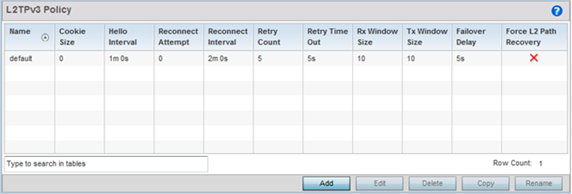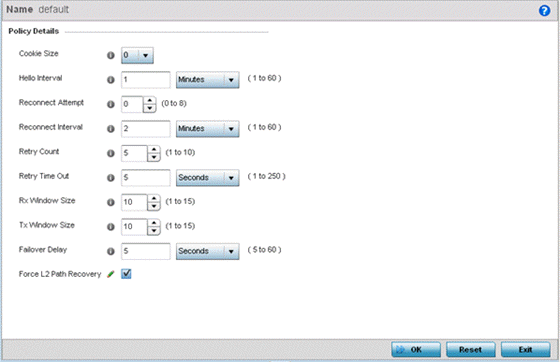L2TP V3 Configuration
About this task
L2TP V3 is an IETF standard used for transporting different types of layer 2 frames in an IP network. L2TP V3 defines control and encapsulation protocols for tunneling layer 2 frames between two IP nodes.
Use L2TP V3 to create tunnels for transporting layer 2 frames. L2TP V3 enables WiNG supported controllers and access points to create tunnels for transporting Ethernet frames to and from bridge VLANs and physical ports. L2TP V3 tunnels can be defined between WiNG managed devices and other vendor devices supporting the L2TP V3 protocol.

Note
A pseudowire is an emulation of a layer 2 point-to-point connection over a PSN (packet-switching network). A pseudowire was developed out of the necessity to encapsulate and tunnel layer 2 protocols across a layer 3 network.Ethernet VLAN pseudowires transport Ethernet frames to and from a specified VLAN. One or more L2TP V3 tunnels can be defined between tunnel end points. Each tunnel can have one or more L2TP V3 sessions. Each tunnel session corresponds to one pseudowire. An L2TP V3 control connection (a L2TP V3 tunnel) needs to be established between the tunneling entities before creating a session.
For optimal pseudowire operation, both the L2TP V3 session originator and responder need to know the psuedowire type and identifier. These two parameters are communicated during L2TP V3 session establishment. An L2TP V3 session created within an L2TP V3 connection also specifies multiplexing parameters for identifying a pseudowire type and ID.

Note
If connecting an Ethernet port to another Ethernet port, the pseudowire type must be Ethernet port, if connecting an Ethernet VLAN to another Ethernet VLAN, the pseudowire type must be Ethernet VLAN.To define an L2TP V3 tunnel configuration:





